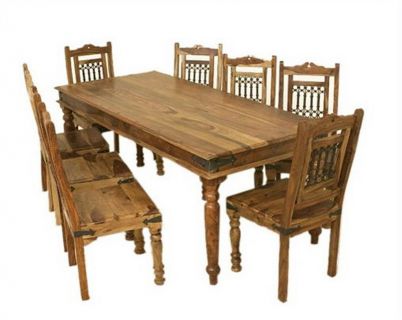Welcome! Here are the website rules, as well as some tips for using this forum.
Need to contact us? Visit https://heatinghelp.com/contact-us/.
Click here to Find a Contractor in your area.
If our community has helped you, please consider making a contribution to support this website. Thanks!
Furniture and central heating living in harmony
Options

HeatingHelp
Administrator Posts: 718
0
Comments
-
I have a problem as there is nowhere for my new oak desk but directly in front of a long radiator (which also cannot be moved). I am however thinking of purchasing a roll or sheet of self stick high temperature insulation foil to stick to the back of each of the pedestals and under the foot well. If I am to believe the information by the manufacturers these will reflect up to 90% of any heat radiated from the rad itself and is thin enough that it would not be seen side on. Hopefully this would solve the problem.0
-
What is the problem exactly- the utilization of space, or the effect of the heating on the wood?
Is your heating system hot water, or steam?
Your desk should be able to stand any constant temperature in the room. Temperature setbacks will cause more expansion, and contraction, which should be avoided.--NBC0 -
It will dry the wood, if you make a reflector be sure to have it open on the bottom so that cool air will enter and the heated air will rise up in a chimney effect or you may lose some output of the radiator.0
-
Something else for the worrywarts! As long as changes are relatively slow -- both humidity and temperature -- I've not seen the problem. And believe me, the place I care for is full of museum quality antique furniture -- up to and including three Steinway grand pianos, one of which is a foot from a very large steam radiator.Br. Jamie, osb
Building superintendent/caretaker, 7200 sq. ft. historic house museum with dependencies in New England2 -
Real pianos are humidity critical.
I had two conductors that had Steinways and humidity had to be spot on, it changes the wood plates and alters the tuning.
If memory serves Billy Joel and Elton John had two stage sets so a pair of grand pianos could sit for a day and then be tuned.
How does humidity level affect my piano's tuning?
Swelling and shrinking of the piano's soundboard is the most immediate and noticeable effect of humidity change. The soundboard, a sheet of wood approximately 3/8 of an inch thick, is made with a slightly crowned shape. The strings pass over the soundboard and are connected to it by a wooden piece called a bridge. The upward crown of the soundboard presses the bridge tightly against the strings.
As the moisture level in the soundboard increases during periods of high relative humidity, the crown expands and pushes the bridge harder against the strings. The strings are stretched tighter and the piano's pitch rises. Because this increase in crown is greater in the center of the soundboard than at the edges, the pitch rises more in the middle octaves than in the bass or treble registers.
During periods of low relative humidity the soundboard shrinks, reducing the crown and decreasing pressure against the strings. The pitch drops, again with the greatest effect noticeable in the center of the keyboard. When relative humidity returns to its previous level, the average pitch of all the strings will return to normal, although the exact pitch of individual strings will be slightly changed from their original settings. Thus, a piano only will stay in tune as long as the relative humidity level in the air surrounding the soundboard remains constant. Extreme humidity changes require making greater changes in string tension to bring the piano into tune. This upsets the equilibrium between the string tension and the piano frame, and the piano never becomes stable.
http://www.ptg.org/Scripts/4Disapi.dll/4DCGI/cms/review.html?Action=CMS_Document&DocID=610 -
Pianos, and furniture are two completely different animals.
Furniture being much more robust to change in humidity, and temperature.
How much of any wood piece that is truly finished to curb moisture from being absorbed, or lost from the wood makes a difference. Not being a piano expert however to my knowledge level most wood interior components critical to the pianos tuning have very little finish for obvious reasons.
0 -
@GreenGene 's comments on tuning and humidity are quite correct -- and the pianos I care for are tuned regularly, for that reason (as well as that pianos will slowly drift anyway!). I was thinking more in terms of actual damage, though, such as the soundboard cracking (which is pretty much lethal). And, as I said, if the humidity and temperature changes are gradual, it does not seem to be a problem.
I might add -- forced air heat, particularly with setbacks, is very very hard on pianos, as well as most other good furniture!Br. Jamie, osb
Building superintendent/caretaker, 7200 sq. ft. historic house museum with dependencies in New England2 -
yeah come to think of it one conductor had warm air and that one was a pain, several calls a year, they would freak out about their pianos going out of tune0
-
With furniture I think an issue would be antiques that are already pretty dry.
I try like hell to keep my house @ 50% just because of the issues pointed out by ASHRAE and I have allergies/asthma.
0
Categories
- All Categories
- 87.3K THE MAIN WALL
- 3.2K A-C, Heat Pumps & Refrigeration
- 61 Biomass
- 429 Carbon Monoxide Awareness
- 120 Chimneys & Flues
- 2.1K Domestic Hot Water
- 5.8K Gas Heating
- 115 Geothermal
- 166 Indoor-Air Quality
- 3.7K Oil Heating
- 77 Pipe Deterioration
- 1K Plumbing
- 6.5K Radiant Heating
- 395 Solar
- 15.7K Strictly Steam
- 3.4K Thermostats and Controls
- 56 Water Quality
- 51 Industry Classes
- 50 Job Opportunities
- 18 Recall Announcements





